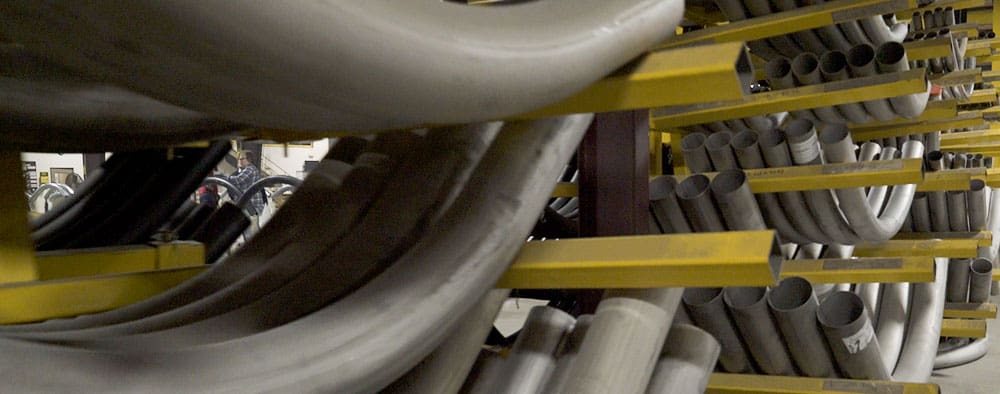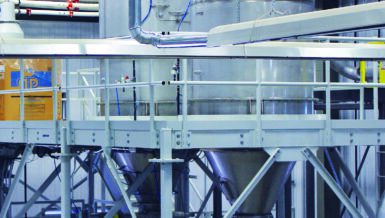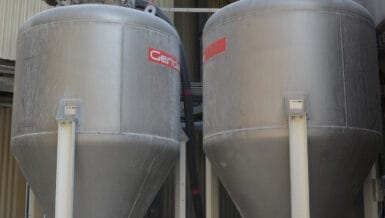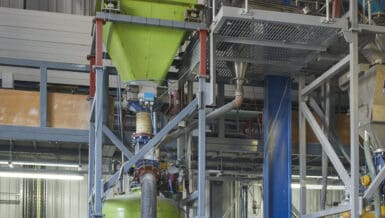Over the years of pneumatic conveying’s history, many people have developed various ways of handling the complex problem of wear. Just as there are many different conveying applications, there are also many different solutions. Each solution is geared toward solving a particular problem while remaining within the bounds of a set of constraints that are considered important. Obviously, the most common constraint is replacement cost, but there are also other important factors like elbow material composition, corrosion resistance, food contact concerns, ease of replacement, and system space. So, with all these different considerations – in addition to abrasion resistance – a review of specialty products and techniques is in order.
The first consideration when picking a replacement elbow is usually cost. But, because of the labor required in replacing elbows, ease of replacement often goes hand in hand with considering the cost of the replacement elbow. Therefore, the most popular solutions are ones that fit into an existing system just like the original sweep elbow. Following are some of these solutions.
Taper Bored Elbows
The first thing people usually consider for reducing wear is to use thicker-walled elbows. If you are using a thin-walled tube, and moving to only marginally thicker wall, this is not usually a problem. However, if you are using a wall-like SCH10 pipe and moving to a thicker wall, like SCH80 pipe, then the difference between the materials can create a ledge where the two materials are joined. While in some applications this isn’t a problem, in others it may be undesirable. That ledge can cause problems like product buildup or air turbulence. The solution to this problem is to use a thick-walled elbow with the ends taper bored down to meet the other pipe material exactly, thereby eliminating the ledge. A taper bore slowly feathers the thickness of the elbow’s tangent material in the first few inches of the elbow. It allows a thick-walled elbow to smoothly transition down to a thickness where a ledge will not occur.
Induction Hardened Elbows
Induction hardened elbows are sweep elbows bent from a special hardened pipe. About half of the inside wall is hardened for abrasion resistance, the outside of the wall is left mild for bending. The hardened inside wall is about 600 Brinell to protect from wear. Mild steel elbows rate at 125 Brinell, so the induction hardened steel is several times harder than that of the standard elbow.
Square Elbow or Flat-Back Elbow
This is a square elbow made from sheet metal sides that use fabricated transitions that move from a round to square and then back to round again. These elbows can be made on any centerline radius and made to fit in the place of a standard sweep elbow. Frequently, they are made with a replaceable metal back. Square elbows can work great for mildly abrasive applications. Additionally, there are also variations of these elbows with ceramic tiles inside – sometimes replaceable – that can be used for more intensively abrasive problems. However, there is one problem with this design – the transitions. The transitions are the weak point. Because of the turbulence created, they can experience a lot of wear. Therefore, transitions on square elbows are often replaceable or reinforced against wear.
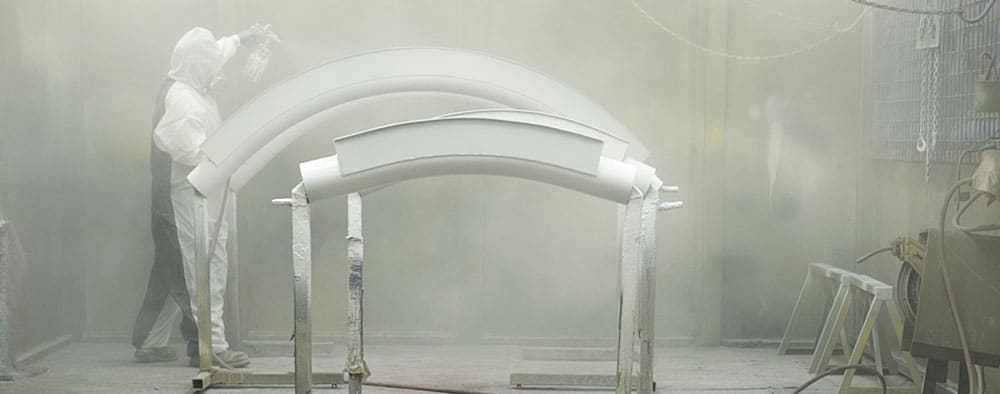
Replaceable-Back Elbow
This is a regular sweep elbow with sides welded on and a replaceable plate bolted on the back. It uses a similar “wear and replace” philosophy as the square elbow. Again, these can work great for mild abrasion problems. These elbows can be enhanced by using thicker plates on the back of the elbow or using AR steel material. This elbow doesn’t use transitions, so it doesn’t have the problem of wearing them out. However, they can have the problem of wearing out the sides before the top, compromising the structural integrity of the elbow. Furthermore, when the top of the elbow wears away there may be some open pocket areas between the round elbow and the square back. This may create an opportunity for materials to pack into that area. For this reason, food products and lines that convey multiple colors that contaminate should be avoided.
Hollow-Back Elbow
A hollow-back elbow is exactly as it sounds. Either an empty square box or an open rounded channel is welded onto the back of a sweep elbow. Once material wears through the elbow, the cavity can fill up with the product and protect against abrasion by wearing against itself. This can work really well with extremely abrasive materials that tend to pack. How well the material packs into the cavity depends on the characteristics of the material, the velocity of the system, and the position of the elbow. Once again, because of the pocket area of the elbow that holds material, food and materials that can spoil or contaminate should be avoided.
Cement-Back Elbow
A cement-back elbow is constructed like a Hollow-back elbow – except the cavity is filled with cement. For obvious reasons, these are most popular in the cement industry. While cement is not the hardest of substances, it still can be quite effective in heavy industrial applications.
Porcelain Lined Elbow (Ceramic Lined)
While these are sometimes marketed as ceramic lined elbows, they are not. Porcelain Lined elbows have an industrial porcelain lining fired into the inside of the elbow. This lining is only several thousandths thick. It protects by lowering the coefficient of friction inside the elbows and allowing the product to slide inside them. Additionally, industrial porcelain does possess some real abrasion resistance because of its hardness – a 6 on the Mohs scale – which is harder than mild steel. Furthermore, porcelain can offer some measure of corrosion protection. However, all provided protection is very thin and susceptible to cracking with hard impact. There can also be pinholes and imperfections in the kilning process. Because of this, they are not considered to be a food-grade solution.
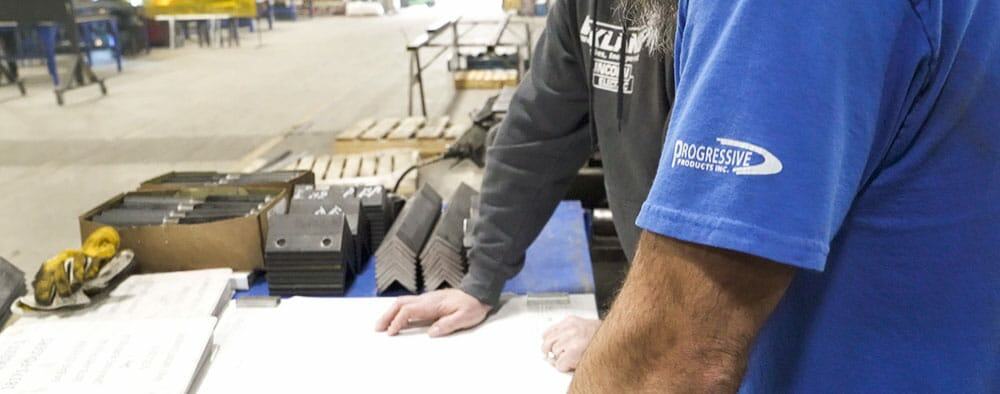
Ceram-Back® Elbow
The Ceram-Back® elbow is a sweep elbow with a ½-in. of hard ceramic compound on the outside of the elbow. The idea is that the metal of the elbow is left to wear out then transfer the abrasion to the much harder ceramic material. The advantage of these elbows are they can offer ceramic protection to any size or centerline radius of elbow without mitering – something difficult for ceramic tile lining. The Ceram-Back® elbow also only offers protection where it’s needed – the back and sides of the elbow.
They offer excellent protection for sliding abrasion. Ceram-Back® elbows can also be used in conjunction with other techniques such as taper boring, induction hardening, porcelain lining, and tungsten carbide lining. However, the downside is that they are not as good as ceramic tiles for protecting against large particle or heavy impact problems. They also have some heat limitations.
Ceramic- and Basalt-Lined Elbows
Ceramic- and basalt-lined elbows offer superior protection for almost any application. They are inherently impact resistant and offered in high-heat and corrosion-resistant variations. The tiles used to line the elbows are offered from thinner protection – like ½ in. – to several inch-thick bricks. However, their construction can make them harder to get in smaller sizes and longer centerline radii. Additionally, it is not unusual for these elbows to have to use special oversized flanges to fit into a system because of the unusual size of the outer diameter of the elbow. Ceramic lined products also tend to have a longer lead times and are usually the most expensive of all the solutions.
Cast Ceramic Flat-Back Elbow
This is an elbow with a box back on a sweep elbow – like a cement-back elbow. Instead of being filled with cement, it is filled with solid cast ceramic tiles. It has a heavy resistance to wear and impact. It can be easily patched on the outside, if needed, and it is much cheaper than a ceramic tile-lined elbow.
Furthermore, unlike a ceramic lined box elbow, it doesn’t have transitions that wear out or cause turbulence. It is also available in most sizes, in any degree, or in any centerline radius.
Cast-Back Elbow
The Cast-Back Elbow offers the protection of a Cast Ceramic Flatback Elbow, but with a standard thicker tile and built-in side protection. This elbow if perfect for course abrasive products with high impact. Sometimes space is a huge factor. For those who have systems that are short on space – or for those who don’t mind refitting their system – there are specialty elbows that come only in a short radius. Some of these solutions are the following:
Tungsten Carbide Clad Elbows
Tungsten carbide is an ultra-hard, abrasion-resistant metal coating applied to the inside of elbows. It has really excellent wear properties – particularly against sliding abrasion. However, because of the way it is applied, the coating is usually fairly thin and limited to shorter radii elbows. It should also be noted that tungsten carbide usually offers some corrosion protection.
Dead End Tee (Blind Tee)
These elbows mechanically protect against abrasion by filling one end with material that then protects from wear by having the product wear against itself. These tees can work really well in many different situations. However, they should not be used if the product is moist, cohesive, or sticky.
Dead end tees are available in mild steel, abrasion-resistant materials, and can also be ceramic coated.
Ni-Hard Bends
These are short radius elbows that are cast out of Ni-Hard alloy (around 600 Brinell). They are usually thick-walled, very tough, and good for high heat applications. Some of the elbows even have replaceable back designs. That said, they are fittings – so they are only available in short radii, and are limited in size and degree. Additionally, while Ni-Hard is tough, it is not nearly as tough as harder materials such as ceramic tile.
Vortex Elbows
Vortex elbows, such as the Progressive Products Aero-Back™, protect against abrasion by using mechanical means. They have a chamber in the back of the elbow that causes the material to spin into a vortex. This vortex deflects material and causes the material to move through the elbow in a way that reduces wear. This style of elbow is available in different materials and alloys. Some of these cast materials offer extra abrasion or corrosion resistance. There are, however, some definite limitations.
There is a minimum amount of line pressure and product flow required for the vortex action to work properly. And, because they are fittings, they are limited to certain sizes, configurations, and degrees.
As this brief overview has shown, there are many different solutions available to solve wear in pneumatic conveying systems. Some are direct replacements or fit in small spaces, and some are not. Some work well with high heat or corrosion, and some do not. There is no one solution that solves all problems. In pneumatic conveying, the best solution is always the one that fits the import criteria of a particular system and offers the best overall value for the customer.




